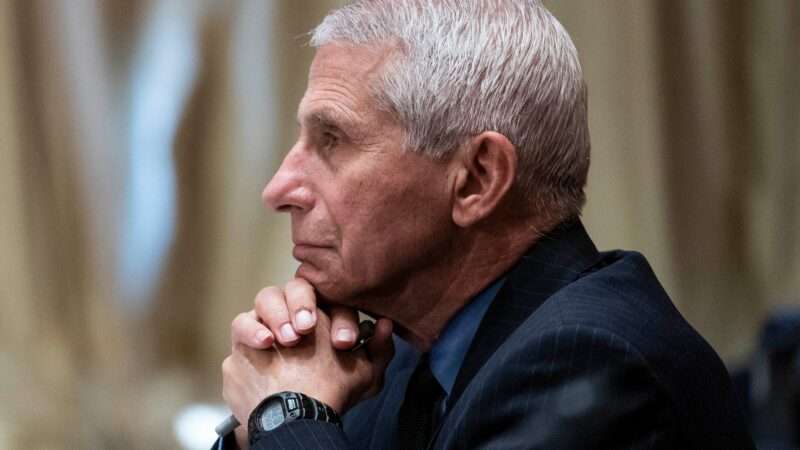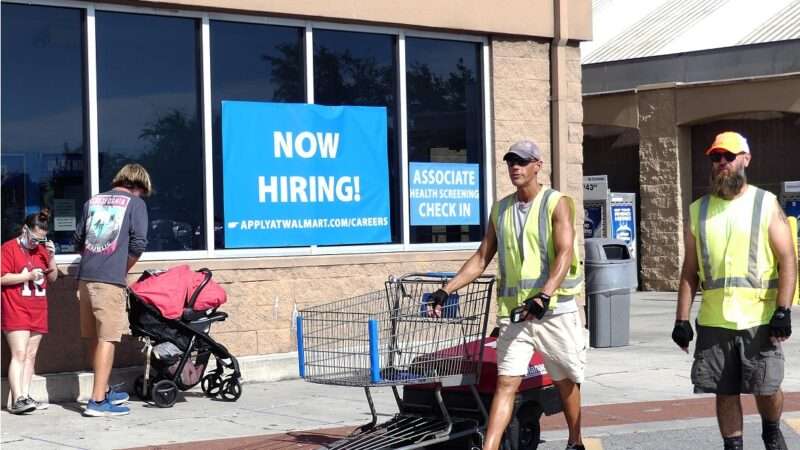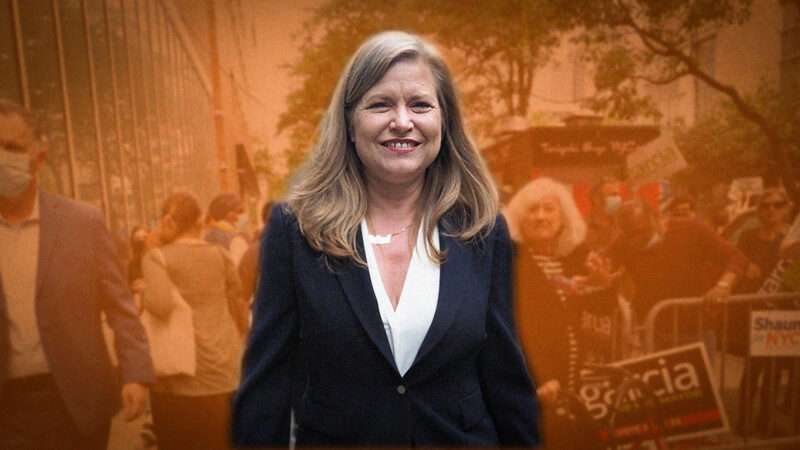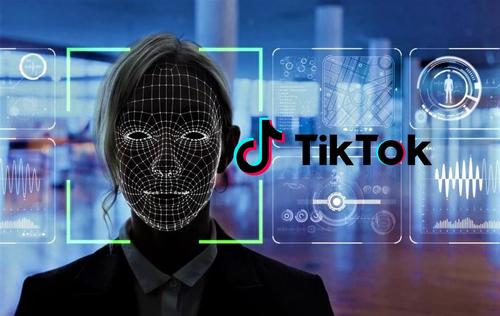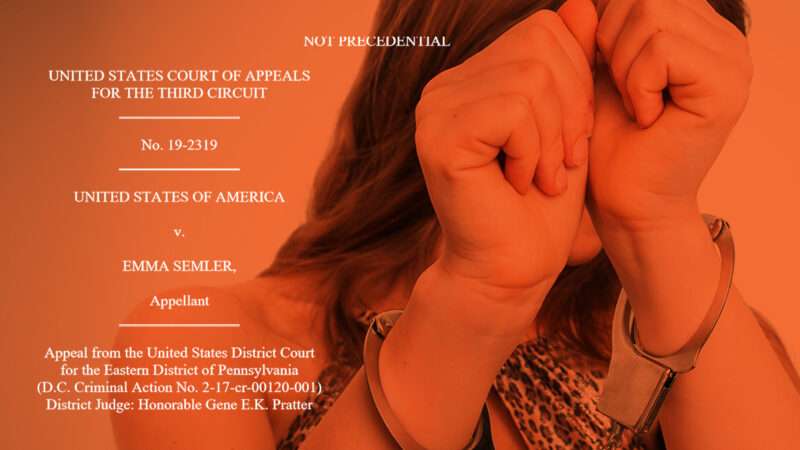Authored by Bari Weiss via Substack,
Whole areas of research are off-limits. Top physicians treat patients based on their race. An ideological ‘purge’ is underway in American medicine…
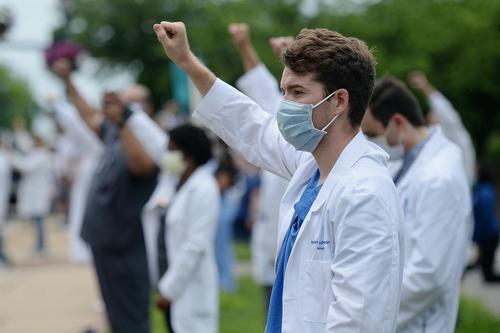
Several hundred health-care workers protest against police brutality on June 5, 2020, in St Louis. (Michael B. Thomas/Getty Images)
I always thought that if you lived through a revolution it would be obvious to everyone. As it turns out, that’s not true. Revolutions can be bloodless, incremental and subtle. And they don’t require a strongman. They just require a sufficient number of well-positioned true believers and cowards, like those sitting in the C-suite of nearly every major institution in American life.
That’s one of the lessons I have learned over the past few years as the institutions that have upheld the liberal order — our publishing houses, our universities, our schools, our non-profits, our tech companies — have embraced a Manichean ideology that divides people by identity and punishes anyone that doesn’t adhere to every aspect of that orthodoxy.
This is wrong when it happens at a company Apple or Condé Nast. But there are sectors where the stakes of the ideological takeover are higher. Like K-12 education.
Readers of this newsletter know that I’ve been particularly focused on it. In part, this is because the legacy press is ignoring or lying about the story. In part it’s because the stakes feel so high.
But if any area is more urgent, it is the world of medicine, where the ability to speak truthfully is quite literally a matter of life and death. Without being able to discuss reality and take intellectual risks, it’s impossible to get to the truth. No truth, no medical progress.
For several months, I have been talking to a group of doctors who are alarmed at what they are witnessing in some of the top medical schools and hospitals in the country. It was clear that this was a story that deserved to be told. And Katie Herzog was the perfect person to pursue it.
Katie could have had a career as a stand-up, but for some reason she decided to become a journalist. And she is a fearless one. I first learned of her work when she was writing for The Stranger in Seattle, covering topics including detransition, the scandal at Evergreen State College, and the impact of what we now call cancel culture on some small businesses in the Pacific Northwest. She is now, along with Jesse Singal, the host of a podcast called Blocked and Reported.
This story is the first in a series.
* * *
‘People Are Afraid to Speak Honestly’
They meet once a month on Zoom: a dozen doctors from around the country with distinguished careers in different specialities. They vary in ethnicity, age and sexual orientation. Some work for the best hospitals in the U.S. or teach at top medical schools. Others are dedicated to serving the most vulnerable populations in their communities.
The meetings are largely a support group. The members share their concerns about what’s going on in their hospitals and universities, and strategize about what to do. What is happening, they say, is the rapid spread of a deeply illiberal ideology in the country’s most important medical institutions.
This dogma goes by many imperfect names — wokeness, social justice, critical race theory, anti-racism — but whatever it’s called, the doctors say this ideology is stifling critical thinking and dissent in the name of progress. They say that it’s turning students against their teachers and patients and racializing even the smallest interpersonal interactions. Most concerning, they insist that it is threatening the foundations of patient care, of research, and of medicine itself.
These aren’t secret bigots who long for the “good old days” that were bad for so many. They are largely politically progressive, and they are the first to say that there are inequities in medicine that must be addressed. Sometimes it’s overt racism from colleagues or patients, but more often the problem is deeper, baked into the very systems clinicians use to determine treatment.
“There’s a calculator that people have used for decades that predicts the likelihood of having a successful vaginal delivery after you’ve had a cesarean,” one obstetrician in the Northeast told me. “You put in the age of the person, how much they weigh, and their race. And if they’re black, it calculates that they are less likely to have successful vaginal delivery. That means clinicians are more likely to counsel black patients to get c-sections, a surgery they might not actually need.”
There’s no biological reason for race to be a factor here, which is why the calculator just changed this year. But this is an example of how system-wide bias can harm black mothers, who are two to three times more likely to die in childbirth than white women even when you control for factors like income and education, which often make racial disparities disappear.
But while this obstetrician and others see the problems endemic in their field, they’re also alarmed by the dogma currently spreading throughout medical schools and hospitals.
I’ve heard from doctors who’ve been reported to their departments for criticizing residents for being late. (It was seen by their trainees as an act of racism.) I’ve heard from doctors who’ve stopped giving trainees honest feedback for fear of retaliation. I’ve spoken to those who have seen clinicians and residents refuse to treat patients based on their race or their perceived conservative politics.
Some of these doctors say that there is a “purge” underway in the world of American medicine: question the current orthodoxy and you will be pushed out. They are so worried about the dangers of speaking out about their concerns that they will not let me identify them except by the region of the country where they work.
“People are afraid to speak honestly,” said a doctor who immigrated to the U.S. from the Soviet Union. “It’s like back to the USSR, where you could only speak to the ones you trust.” If the authorities found out, you could lose your job, your status, you could go to jail or worse. The fear here is not dissimilar.
When doctors do speak out, shared another, “the reaction is savage. And you better be tenured and you better have very thick skin.”
“We’re afraid of what’s happening to other people happening to us,” a doctor on the West Coast told me. “We are seeing people being fired. We are seeing people’s reputations being sullied. There are members of our group who say, ‘I will be asked to leave a board. I will endanger the work of the nonprofit that I lead if this comes out.’ People are at risk of being totally marginalized and having to leave their institutions.”
While the hyper focus on identity is seen by many proponents of social justice ideology as a necessary corrective to America’s past sins, some people working in medicine are deeply concerned by what “justice” and “equity” actually look like in practice.
“The intellectual foundation for this movement is the Marxist view of the world, but stripped of economics and replaced with race determinism,” one psychologist explained. “Because you have a huge group of people, mostly people of color, who have been underserved, it was inevitable that this model was going to be applied to the world of medicine. And it has been.”
‘Whole Areas of Research Are Off-Limits’
“Wokeness feels like an existential threat,” a doctor from the Northwest said. “In health care, innovation depends on open, objective inquiry into complex problems, but that’s now undermined by this simplistic and racialized worldview where racism is seen as the cause of all disparities, despite robust data showing it’s not that simple.”
“Whole research areas are off-limits,” he said, adding that some of what is being published in the nation’s top journals is “shoddy as hell.”
Here, he was referring in part to a study published last year in the Proceedings Of The National Academy Of Sciences. The study was covered all over the news, with headlines like “Black Newborns More Likely to Die When Looked After by White Doctors” (CNN), “The Lack of Black Doctors is Killing Black Babies” (Fortune), and “Black Babies More Likely to Survive when Cared for by Black Doctors” (The Guardian).
Despite these breathless headlines, the study was so methodologically flawed that, according to several of the doctors I spoke with, it’s impossible to extrapolate any conclusions about how the race of the treating doctor impacts patient outcomes at all. And yet very few people were willing to publicly criticize it. As Vinay Prasad, a clinician and a professor at the University of California San Francisco, put it on Twitter: “I am aware of dozens of people who agree with my assessment of this paper and are scared to comment.”
“It’s some of the most shoddy, methodologically flawed research we’ve ever seen published in these journals,” the doctor in the Zoom meeting said, “with sensational conclusions that seem totally unjustified from the results of the study.”
“It’s frustrating because we all know how hard it is to get good, sound research published,” he added. “So do those rules and quality standards no longer apply to this topic, or to these authors, or for a certain time period?”
At the same time that the bar appears to be lower for articles and studies that push an anti-racist agenda, the consequences for questioning or criticizing that agenda can be high.
Just ask Norman Wang. Last year, the University of Pittsburgh cardiologist was demoted by his department after he published a paper in the Journal of the American Heart Association (JAHA) analyzing and criticizing diversity initiatives in cardiology. Looking at 50 years of data, Wang argued that affirmative action and other diversity initiatives have failed to both meaningfully increase the percentage of black and Hispanic clinicians in his field or to improve patient outcomes. Rather than admitting, hiring and promoting clinicians based on their race, he argued for race-neutral policies in medicine.
“Long-term academic solutions and excellence should not be sacrificed for short-term demographic optics,” Wang wrote. “Ultimately, all who aspire to a profession in medicine and cardiology must be assessed as individuals on the basis of their personal merits, not their racial and ethnic identities.”
At first, there was little response. But four months after it was published, screenshots of the paper began circulating on Twitter and others in the field began accusing Wang of racism. Sharonne Hayes, a cardiologist at the Mayo Clinic, implored colleagues to “rise up.” “The fact that this is published in ‘our’ journal should both enrage & activate all of us,” she wrote, adding the hashtag #RetractRacists.
Soon after, Barry London, the editor in chief of JAHA, issued an apology and the journal retracted the work over Wang’s objection. London cited no specific errors in Wang’s paper in his statement, just that publishing it was antithetical to his and the journal’s values. Retraction, in a case like this, is exceedingly rare: When papers are retracted, it’s generally because of the data or the study has been discredited. A search of the journal’s website and the Retraction Database found records of just two retractions in JAHA: Wang’s paper and a 2019 paper that erroneously linked heart attacks to vaping.
After the outcry, the American Heart Association (AHA), which publishes the journal, issued a statement denouncing Wang’s paper and promising an investigation. In a tweet, the organization said it “does NOT represent AHA values. JAHA is editorially independent but that’s no excuse. We’ll investigate. We’ll do better. We’re invested in helping to build a diverse health care and research community.”
As the criticism mounted, Wang was removed from his position as the director of a fellowship program in clinical cardiac electrophysiology at University of Pittsburgh Medical Center and was prohibited from making any contact with students. His boss reportedly told him that his classroom was “inherently unsafe” due to the views he expressed.
Wang is now suing both the AHA and the University of Pittsburgh for defamation and violating his First Amendment rights. To the doctors on the Zoom call, his case was a stark warning of what can happen when one questions policies like affirmative action, which, according to recent polling, is opposed by nearly two-thirds of Americans, including majorities of blacks, Hispanics, and Asians.
“I’m into efforts to make medicine more diverse,” a doctor from the Zoom group said. “But what’s gone off the rails here is that there is an intolerance of people that have another point of view. And that’s going to hurt us all.”
JAHA isn’t the only journal issuing apologies. In February, the Journal of the American Medical Association (JAMA) released a podcast hosted by surgeon and then-deputy journal editor Edward Livingston, who questioned the value of the hyper focus on race in medicine as well as the idea that medicine is systemically racist.
“Personally, I think taking racism out of the conversation will help,” Livingston said at one point. “Many of us are offended by the concept that we are racist.”
It’s possible Livingston’s comments would have gone unnoticed but JAMA promoted the podcast on Twitter with the tone-deaf text: “No physician is racist, so how can there be structural racism in health care?”
Even more than in the case of Norman Wang, this tweet, and the podcast it promoted, led to a massive uproar. A number of researchers vowed to boycott the journal, and a petition condemning JAMA has received over 9,000 signatures. In response to the backlash, JAMA quickly deleted the episode, promised to investigate, and asked Livingston to resign from his job. He did.
If you try to access the podcast today, you find an apology in its place from JAMA editor-in-chief Howard Bauchner, who called Livingston’s statements, “inaccurate, offensive, hurtful and inconsistent with the standards of JAMA.” Bauchner was also suspended by JAMA pending an independent investigation. This Tuesday, JAMA announced that Bauchner officially stepped down. In a statement, he said he is “profoundly disappointed in myself for the lapses that led to the publishing of the tweet and podcast. Although I did not write or even see the tweet, or create the podcast, as editor in chief, I am ultimately responsible for them.”
Shortly after this announcement, the New York Times reported that “JAMA’s reckoning” led to a backlash from some JAMA members, who wrote in a letter to the organization that “there is a general feeling that the firing of the editors involved in the podcast was perhaps precipitous, possibly a blot on free speech and also possibly an example of reverse discrimination.” Bauchner’s last day at JAMA is June 30.
Calling Out Patients
What happened to Norman Wang, Edward Livingston, and Howard Bauchner contribute to what one clinician described as a “a chilly atmosphere.” That chill extends to teaching the next generation of doctors.
“Some attending physicians are hesitant to provide constructive criticism to trainees over fears of being perceived as racist,” a doctor in the Northeast said. “You ask yourself, ‘Is this worth bringing up?’ You second guess yourself.”
The doctor said this ideology has impacted how some trainees and physicians respond when they encounter bias from patients, which is hardly uncommon for people working in health care. Female doctors are mistaken for nurses. Black doctors are mistaken for aides. Patients refuse care from doctors who aren’t white.
A Jewish doctor in the Northeast told me about encountering antisemitism at work.
“Years ago, I had a guy slowly roll up his sleeve and put his arm down on the table in front of me and he had a big swastika tattoo. And he says my name and repeats it slowly three times. Clearly he is saying he knows I’m Jewish. And I looked at his arm and said, ‘Does it hurt to get a tattoo? I never learned much about that.’ He actually chuckled.”
The doctor kept seeing the patient, who gradually stopped doing drugs, got a job, and pieced his life together. “Twelve years later,” he said, “I was leaving that program and on our last visit, he had a terrible rash on his arm. I said we had to treat that rash, and this big, tough guy started crying. He said, ‘I knew I was going to see you. I was trying to rub it off.’ How about that? People are changeable, but it takes time and it can’t be done by scolding.”
This was what he was taught in his training years ago: You meet patients where they are, help them as much as you can, and hope they are better off for the encounter.
That philosophy, however, is changing. Increasingly, the doctors told me, this next generation of trainees seem to believe it’s also their duty to confront patients about their own prejudice — whether they’re open to it or not.
Last year at Harvard Medical School, a seasoned psychiatrist interviewed an elderly white patient about his battle with substance abuse on Zoom. The patient talked about shame. He felt so much guilt over his drinking and his past behavior, he said that the only person he could have ever confided in was an Eskimo in Alaska who didn’t speak English — and even then, he would have to slit his throat.
It was the sort of thing health-care workers occasionally hear. Historically, the guideline in a situation like that would be to ignore it: They were there to discuss addiction, not the patient’s insensitivity. But a Native American student named Victor Anthony Lopez-Carmen observing the session on Zoom was disturbed. He wrote about it later in Teen Vogue: “His words sparked an immediate, visceral reaction. I felt my blood pressure rise and anxiety overtake my mind and body. My next reaction was to look at how the rest of my classmates were responding. The blank, remote expression on some of their faces, and the silence that followed, remains burned into my psyche.”
When neither the psychiatrist nor any of his fellow students paused in the moment to educate the elderly man about his “violent and racist language,” as Lopez-Carmen described it, he complained. In response, the school organized a session for faculty and students on, Lopez-Carmen writes, “confronting anti-Indigenous racism in the field of medicine.”
Should clinicians police their patients’ language to protect the feelings of their health-care providers? One doctor from the Zoom chat said, unequivocally, no.
“How would chastising, and possibly shaming, a patient — however expertly — affect their comfort in confiding sensitive information important to their care? Patients’ life experiences, stories, attitudes, beliefs, whatever they may be, are data that help us take good care of them.”
As major medical institutions formalize their commitments to social justice ideology, the sentiment that medical professionals need to put aside their feelings in service of treating patients seems increasingly old-fashioned. Some institutions, including Harvard Medical School, the American Psychiatric Association, the American Academy of Pediatrics, and the American Medical Association (AMA), the largest association of physicians and medical students in the U.S., have released statements acknowledging their own history of racism, a trend one of the doctors described as “confessional.”
In an 83-page report released in May, the AMA pledged address its “white supremacist” past, which includes horrific 19th-century practices like performing surgeries on enslaved people without anesthesia as well as the organization’s endorsement of the Chinese Exclusion Act of 1882. But it’s not just ancient history the organization is concerned about: the report also mentions the JAMA podcast that cost Edward Livingston and Howard Bauchner their jobs, referring to the podcast as an “egregious, harmful error.”
The report recommendations rely heavily on diversity training, but as one of the doctors on the Zoom call said, “more diversity trainings are not going to change anything, but they are going to waste time we already don’t have to spare.”
There are, of course, an array of diversity trainings, including some that simply lay out anti-discrimination laws and others that require white people to confess their privilege. Trainings that may have seemed obviously racist just a few years ago — like separating employees into “affinity groups” or “caucuses” based on race — are now commonplace, including at large corporations, small non-profits, and medical institutions. (My wife, a nurse in Seattle, recently joined the “white caucus” at her hospital, and noted that she felt very strange asking to join a whites-only group.)
The diversity industry is now worth billions of dollars, but there have been surprisingly few evaluations of whether or not such trainings actually work. The research that has been done is not encouraging. One study found that these trainings can be counterproductive; another found that positive effects don’t seem to last.
What’s more, the doctors said, statements like the AMA’s seem destined to create backlash. “You have to wonder about the unintended consequences of these organizations falling over themselves to declare that they’re structurally and systemically racist,” one of the doctors said. “Clearly, they think they’re going to get virtue-signaling points. But is it possible these claims are also playing into vaccine hesitancy among people of color? I mean, would you want to get vaccinated at an institution that’s enthusiastically broadcasting to the world, ‘We’re racist!’ I wouldn’t.”
‘I’m Not Going to Treat That White Guy’
There’s clearly a generation gap between these doctors on Zoom, the youngest of whom has been practicing for at least 10 years, and doctors just beginning their career. The older clinicians are more likely to appear politically neutral, at least at work, while younger students and clinicians are more likely to prioritize activism. Those differences can be a major source of tension.
One prominent organization, White Coats for Black Lives, was formed by medical students in 2014 and now has at least 75 chapters all over the U.S. In addition to publishing a Racial Justice Report Card that grades medical schools, the group encourages medical students to make specific demands of their institutions, including that medical schools and hospitals end all relationships with local law enforcement.
When asked what severing ties with police would do in his urban emergency room, one ER doctor said it would be a “total disaster.” Police, he told me, are a vital part of emergency operations, from securing crime scenes so emergency responders can see victims to helping transport patients to keeping hospital staff and patients safe when private security is inadequate.
“I was in a situation once where an ambulance brought in a gunshot victim,” he said. “We brought the patient in, and about 15 minutes later, a group came looking for him. They came to finish him. They were going from room to room, looking for him, and when a couple of guys from hospital security tried to get them to leave, one shot a gun in the air. Luckily enough, we heard police sirens bringing someone else in, and when they heard the sirens, they ran. If not for the police, I don’t know what would have happened.”
As another example of the generation gap, an ER doctor on the West Coast said he sees providers, particularly younger ones, applying antiracist principles in choosing how they allocate their time and which patients they choose to work with. “I’ve heard examples of Covid-19 cases in the emergency department where providers go, ‘I’m not going to go treat that white guy, I’m going to treat the person of color instead because whatever happened to the white guy, he probably deserves it.’”
Some in medicine would like to see such race-conscious bias mandated on an institutional level, particularly in regards to Covid-19, which has killed black, Hispanic, and Native American people at three times the rate as whites. These discrepancies are likely due to an array of factors, including income, housing, work, language, pre-existing conditions, access to health care, and, yes, possibly some degree of racism.
But some politicians and public health officials decided the remedy was to distribute vaccines by race.
In April, Vermont’s Republican Governor Phill Scott announced that any resident over age 16 who identified as a black, indigenous, or a person of color would be eligible for the vaccine before white people, a decision that, according to some legal scholars, likely violated federal law. The CDC itself considered recommending that states prioritize essential workers over the elderly despite the fact that the number one risk factor for dying from Covid is age. The idea had plenty of supporters. Harold Schmidt, a professor of medical ethics and health policy at the University of Pennsylvania, told the New York Times, “Older populations are whiter. Society is structured in a way that enables them to live longer. Instead of giving additional health benefits to those who already had more of them, we can start to level the playing field a bit.”
Ultimately, the CDC did recommend prioritizing vaccines by age, but race-conscious policies go beyond Covid. In May, the Boston Review published an editorial by physicians Bram Wispelwey and Michelle Morse entitled “An Antiracist Agenda for Medicine.” In it, the doctors argue that in order to address discrepancies in health-care access and outcomes, hospitals should commit to “preferentially admitting patients historically denied access to certain forms of medical care.” That is, they should admit people to health services based on their skin color.
This idea is not coming from people with no power.
Michelle Morse is a physician at Harvard Medical School and Brigham and Women’s Hospital. She was recently appointed to be the first Chief Medical Officer of the New York City Department of Health and Mental Hygiene. “Dr. Morse’s experience has combined the best of public health, social medicine, anti-racism education, and activism,” said Health Commissioner Dr. Dave A. Chokshi in a press release. “Health equity requires leaders who propel change and I am grateful that she has joined the Department to help us create a healthier, more equitable, city.”
In the same article in the Boston Review, Dr. Morse and her co-author write that because a study they conducted found that white heart failure patients are more likely to be referred to cardiology specialists than some minority groups, in their own practice they have developed “a preferential admission option for Black and Latinx heart failure patients to our specialty cardiology service.” So when these patients seek care, they are now far more likely to be referred to specialists and admitted to an inpatient service, regardless of whether that’s the most appropriate strategy for their condition, or their primary care providers’ recommendations, or their own personal preferences.
What the authors don’t mention is that while their own study does show that white heart failure patients are more likely to be referred to specialists, this alone doesn’t demonstrate they’re more likely to have better outcomes: More whites in that very study died soon after discharge. This, according to one physician, is exactly what’s wrong with race-conscious policies.
“We have been working for almost a decade now to keep people from getting unnecessary care and unnecessary hospitalization because there are all these unintended consequences,” he said. “You can get infected with an antibiotic-resistant bug; you can get the wrong medication; errors happen. We’re trying to keep people out of the hospital if they don’t need to be there. So when you enact a policy like the one proposed by Michelle Morse, you’re just opening that person up to all these potentially negative consequences.”
In other words, in an effort to address racial disparities, it’s possible the very patients they are attempting to help will suffer more, not less.
A Moral Panic
The day I spoke to the doctors, I’d spent the morning caught in a labyrinth of hold calls, trying to find a new primary care doctor after my insurance had changed for the fourth time in five years. And I was one of the lucky ones: At least I have insurance, something nearly 30 million Americans in this country lack. Besides the problems with accessing health care at all, the doctors themselves told me the disparities in medicine aren’t imagined. Minority populations, especially poor ones, do have worse outcomes than whites in all sorts of metrics.
“We’ve got this opportunity right now to advance really important, progressive reforms,” one doctor said. “Every American understands that the system doesn’t work, that we need better public health, we need better primary care.” But this physician is concerned that “the people leading the woke effort have a deeply unsophisticated understanding of how change occurs in this country. It’s dangerous. I’m fearful there’s going to be a counter-reaction that’s going to be huge and vicious and ugly.”
Others fear the same. Another doctor on the call, a psychologist, called the new orthodoxy a “moral panic” and “symbolic crusade,” like Prohibition, in which the outcome is less important than the sacredness of the movement.
“What happens with symbolic crusades is they overreach and you get a tremendous backlash,” he continued. “If hospitals actually adopt a policy of what can be construed as favoring black people in the ICU, can you imagine what conservative media would do with that? It would play into every fear that what this is really about is suppressing liberty, chilling free speech. I didn’t used to think those fears were legitimate. Now I do. I get it.”
